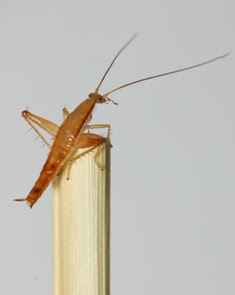Coming Soon: Intelligent Recycling Robots - Jennifer Hicks - Dante's Soma - Forbes
ZenRobotics believes they have the answer to solving the CND waste problem with their intelligent industrial robots. A robotic recycling system powered by AI that can not only sort the waste, but it can tell the difference between what can be recycled/reused and what can’t be recycled.
First, they don’t actually make the robots. They make the AI that goes in the robots. Second, their AI brain is so smart it identifies, sorts and separates raw material from waste from the shape of that waste. This is their special sauce.
This 1.44 minute video shows you how serious Zen Robotics is about waste and their intelligent robots.
ZenRobotics :: Company
ZenRobotics Ltd., founded in 2007, is a Finnish high-tech company specializing in robotic recycling technology. The company's main product is ZenRobotics Recycler, a waste sorting system which separates raw materials from waste.ZenRobotics Recycler will revolutionize the way recycling works – and help solve the global waste crisis that is getting out of hand.
ZenRobotics Ltd. is an expert in:
- advanced AI robotics and sensor fusion
- recycling technology
Collected from: ZenRobotics :: Company
ZenRobotics :: Product
ZenRobotics Recycler is a robotic waste sorting system. Built with off the shelf industrial robotics components, the system utilizes machine learning to separate raw materials from waste. ZenRobotics Recycler is designed for commercial and industrial (C&I) waste, municipal solid waste (MSW), and construction (CND) waste.
ZenRobotics Recycler uses multiple sensor inputs to identify items and raw materials. Possible sensors include Visible spectrum cameras, NIR, 3D laser scanners, haptic sensors, transillumination etc. Thanks to the sensors, a diverse and accurate analysis of waste is possible for the first time.
Unlike any other sorting method, ZenRobotics Recycler can perform multiple simultaneous sorting tasks; reclaim various raw materials and remove contaminants from the main stream. For example, contaminant removal may include the separation of unwanted materials like electronics, PVC, and minerals from the resulting burnable fraction.
Collected from: ZenRobotics :: Product

ZenRonotics develops biologically-inspired, machine learning software which can be used to operate standard industrial robots and train them to separate multiple raw materials from waste. A plethora of sensors like visible spectrum cameras, near infrared cameras, 3D laser scanners, X-rays, metal detectors and weight detectors can be used to recognise materials of different types. ZenRobotics also uses sensors like 3D scanners and touch sensors to improve the robot’s gripper.
Software which learns is rarely 100 percent accurate at performing the task it is trained to do. The false positive and false positive rates are therefore important measures of the effectiveness of a machine learning algorithm. In this case, those measures translate into the rate at which materials are mis-identified or not reycled when they should be. ZenRobotic’s CEO Jaakko Sarela declined to give exact figures but said that the “accuracy is very high. In the end of the day, the purity rate of the recycled material depends mostly on the customer needs.”
ZenRobotics states that by using its robots, users could get more cash for recyclables, reduce landfill tipping fees, lower their operating costs, and reduce the risk to human employees who would otherwise be doing the sorting themselves. They also foresee a day when a smaller version could be used for sorting household waste.
Collected from: Robot designed to sort trash for recycling
Related









